The 10 Most Difficult Musical Instruments to Master (And Why They're Worth the Effort)
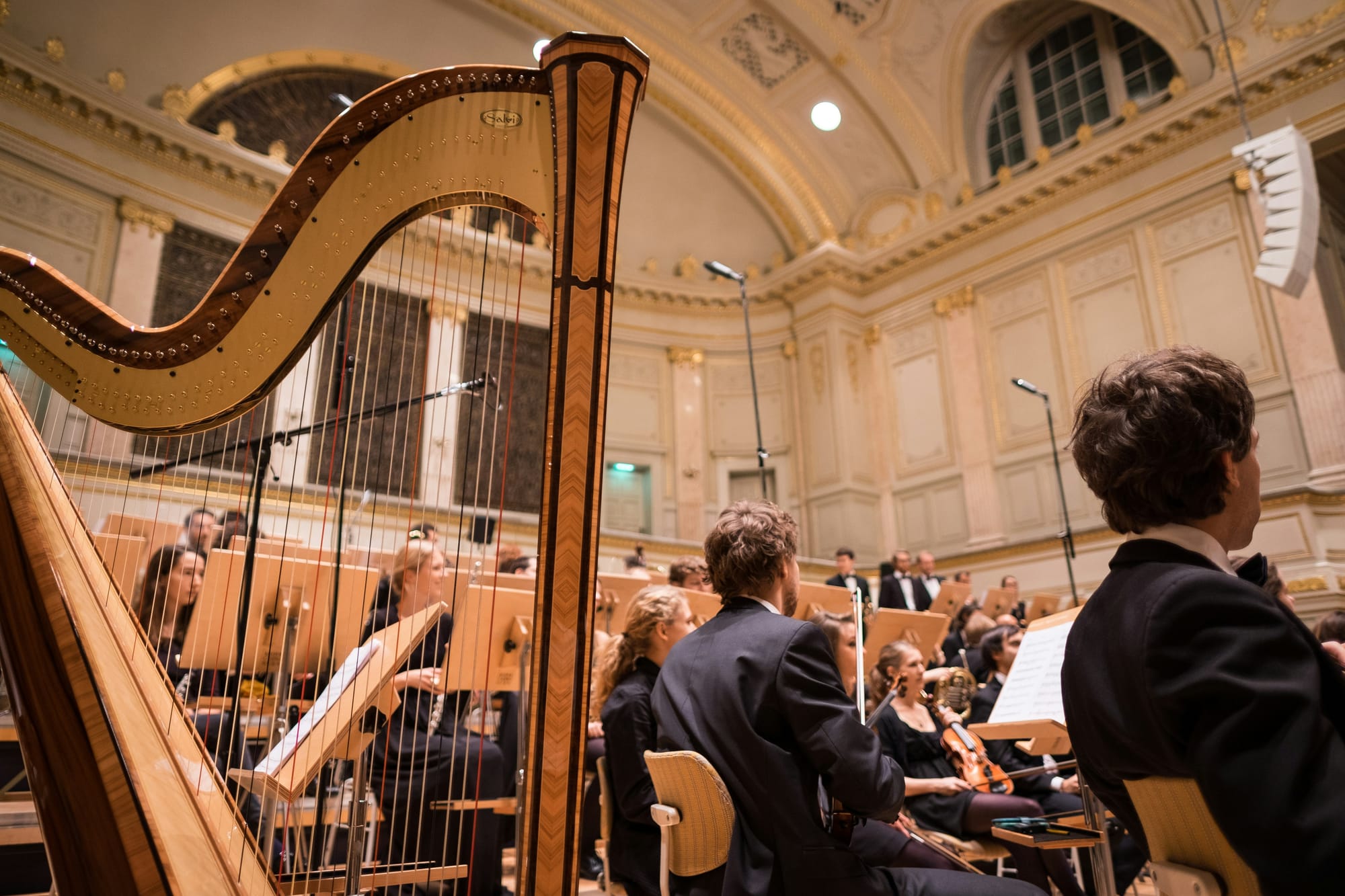
It's true: mastering a musical instrument can be an enriching journey. However, some instruments present more significant challenges than others. From complex techniques to demanding physical coordination, these instruments can push musicians to their limits. In this countdown, we explore the ten most complicated instruments to play. However, if you stick with it, each offers unique rewards for those who embrace the challenge.
Ready to take a challenging instrument to its limit? Explore our best sheet music collection for piano, guitar, and violin experts.
Key Takeaways:
- Technical complexity: These instruments demand advanced skills and precision.
- Physical challenge: Many involve challenging coordination and endurance.
- Learning commitment: Mastery takes years of dedicated practice and resilience.
- Rewarding experience: These instruments offer unparalleled musical satisfaction and expression despite the difficulty.
Criteria for Evaluating the Hardest Musical Instruments
Several factors contribute to the challenge when identifying the most complicated musical instruments to play. These elements help explain why these instruments demand more time, effort, and dedication to master compared to more beginner-friendly options.
Below are the main aspects we carefully considered in evaluating the instruments featured in this countdown:
- Technical complexity: Instruments that require intricate fingerings, precise breath control, and advanced hand-eye coordination are naturally considered more challenging. The need to master specialized techniques adds to the difficulty level.
- Physical demands: It's easy to underestimate the requirement for significant physical stamina, strength, or coordination with some instruments. From managing breath support for wind instruments to the physical exertion needed for oversized instruments, these demands can make learning more strenuous.
- Learning curve: The time it typically takes to produce a decent sound or play basic pieces is crucial. Instruments with a steep learning curve often require years of practice before being able to play regular pieces to a high standard.
- Mental commitment: Persistence through slow progress and frequent frustrating situations requires mental focus and emotional resilience when learning these instruments. This also includes the psychological challenge of mastering complex pieces and performing under pressure.
- Unique techniques: Difficult instruments often require specific – and often tricky – unique techniques. These techniques, while often defining their character, add significantly to the challenge of learning and mastering the instrument.
Most Difficult Instrument to Play: Top 10 Countdown
There are various instruments which are difficult to master. However, using the above criteria, here are the ten instruments we rank as the hardest to play – whether you're a beginner or an experienced musician.
Piano
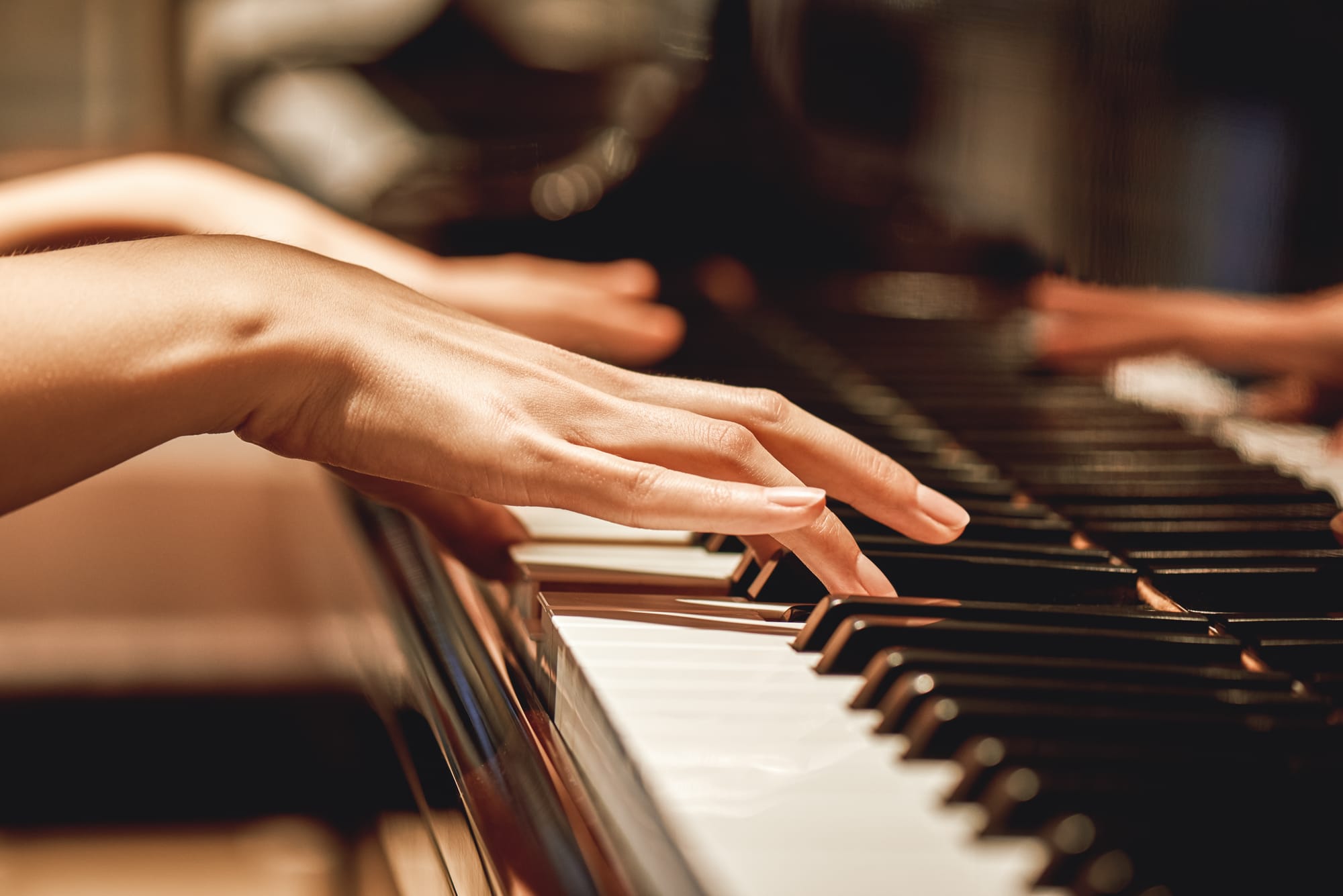
The piano is a versatile instrument used in virtually every music genre. It is often viewed as a fundamental instrument for learning music theory due to its clear visual representation of notes and scales. While basic pieces can be learned quickly – as spotlighted in our guide on the easiest instruments for beginners – it's a different story with advanced pieces. Proficiency in this area takes many years of dedicated practice, where demands of dynamic control and expressive playing make the piano particularly challenging.
Why it's hard: Yes, beginners can learn to play simple melodies quickly. However, mastering the piano requires significant technical skill. The challenge lies in coordinating both hands independently, managing complex fingerings, and simultaneously reading music—in both treble and bass clefs.
Unique challenges:
- Independence of hands. Requires simultaneous different rhythms and notes.
- Sight-reading two staves of music at once (treble and bass clefs).
- Mastering dynamic control and expressiveness. Imperative for an advanced repertoire.
Oboe
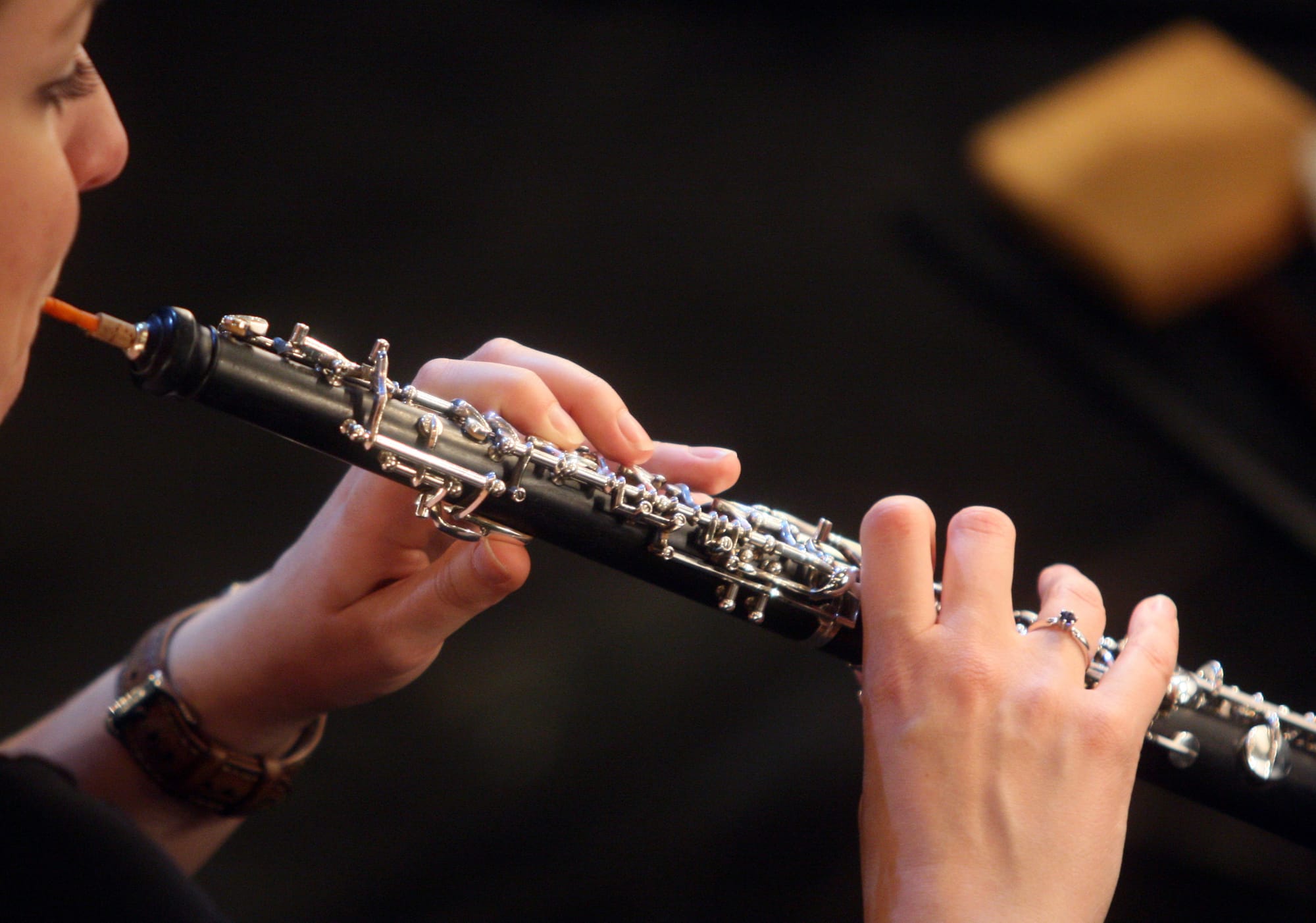
The oboe is a double-reed woodwind instrument known for its penetrating, expressive sound. A crucial component in orchestras and chamber music, it often delivers the tuning note for other instruments due to its clear pitch. However, mastering the oboe's unique sound can take years, with much of the early learning zoned in on simply producing a stable, clear tone. Add in the challenge of reed-making, and this instrument has another layer of difficulty.
Why it's hard: The oboe is one of the most challenging instruments to play due to one main reason: the delicate control required over the double reed. Producing a stable tone requires precise breath control, embouchure strength, and constant reed management. The learning process is particularly frustrating as beginners often struggle to produce a clear sound.
Unique challenges:
- Double reed control to produce a clear, stable tone.
- Breath control and embouchure strength are necessary for sustained playing.
- The added responsibility of making and maintaining reeds is critical to the instrument's sound quality.
French Horn
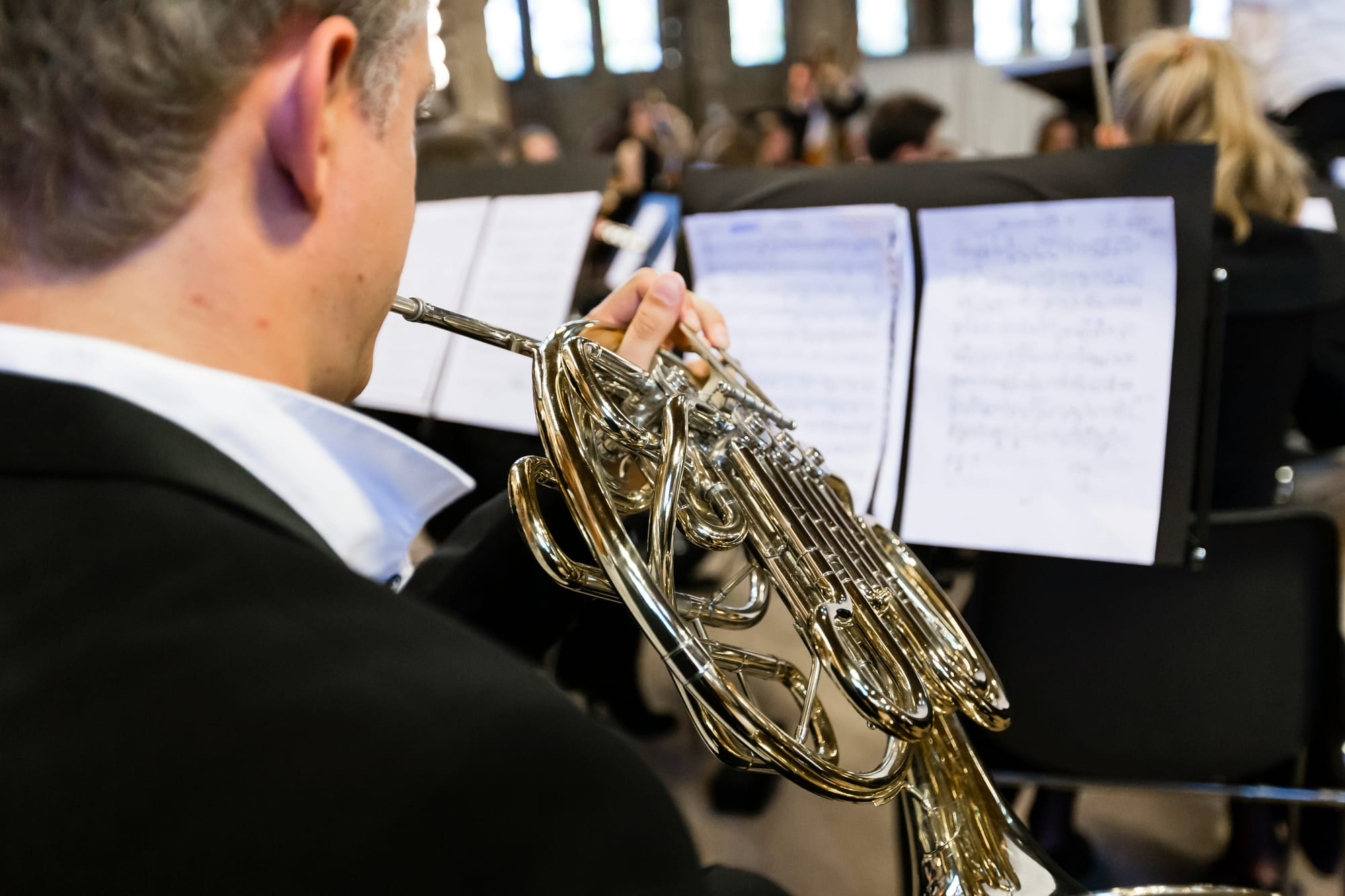
The French horn is a brass instrument with a distinctive, mellow tone. Often used in orchestras and film scores, its wide range and expressive capabilities make it a favorite among composers. However, be warned – it is also one of the most challenging brass instruments to play. Developing the necessary embouchure strength and control takes years of practice to succeed with the French horn.
Why it's hard: The French horn demands exceptional breath control and precise embouchure to hit the correct notes. The instrument's long tubing makes it prone to "cracking" notes, where a slight technique error can cause an unintended pitch. The small mouthpiece—which demands high precision—further adds to its difficulty.
Unique challenges:
- Maintaining precise lip tension to avert cracking notes.
- Managing breath control to sustain notes and achieve dynamic variation successfully.
- Navigating complex fingerings and transpositions. These elements are especially common in orchestral settings.
Bassoon
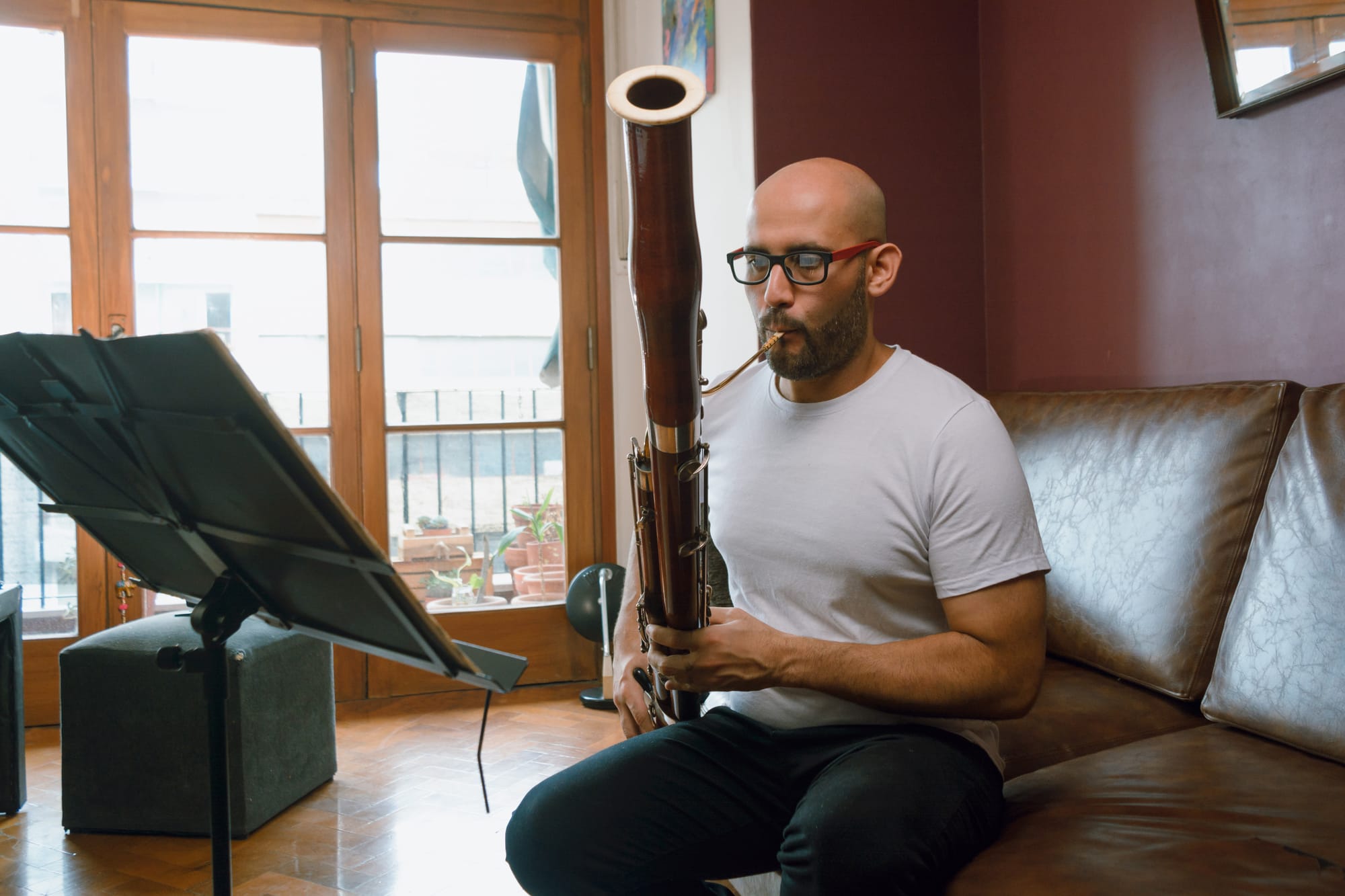
The bassoon is a large, double-reed woodwind instrument that produces a deep, rich sound. It is known for its unique tone, versatility, and role in orchestras, often playing melodic lines and bass parts. Developing the strength and technique needed to play the bassoon well can take years. Beginners usually need help overcoming the fingerings' physical demands and complexity.
Why it's hard: Size, weight, the complexity of the fingerings – numerous challenges exist when playing the bassoon. Like other double reed instruments, it requires meticulous breath control and embouchure strength. The instrument's length – complete with the spacing of the keys – demands careful hand positioning and skill.
Unique challenges:
- Handling the physical size and weight of the instrument. This affects both posture and stamina levels.
- Complex fingerings where you must utilize precise coordination and dexterity.
- Mastering reed-making and instrument maintenance is necessary for consistent sound quality.
Bagpipes
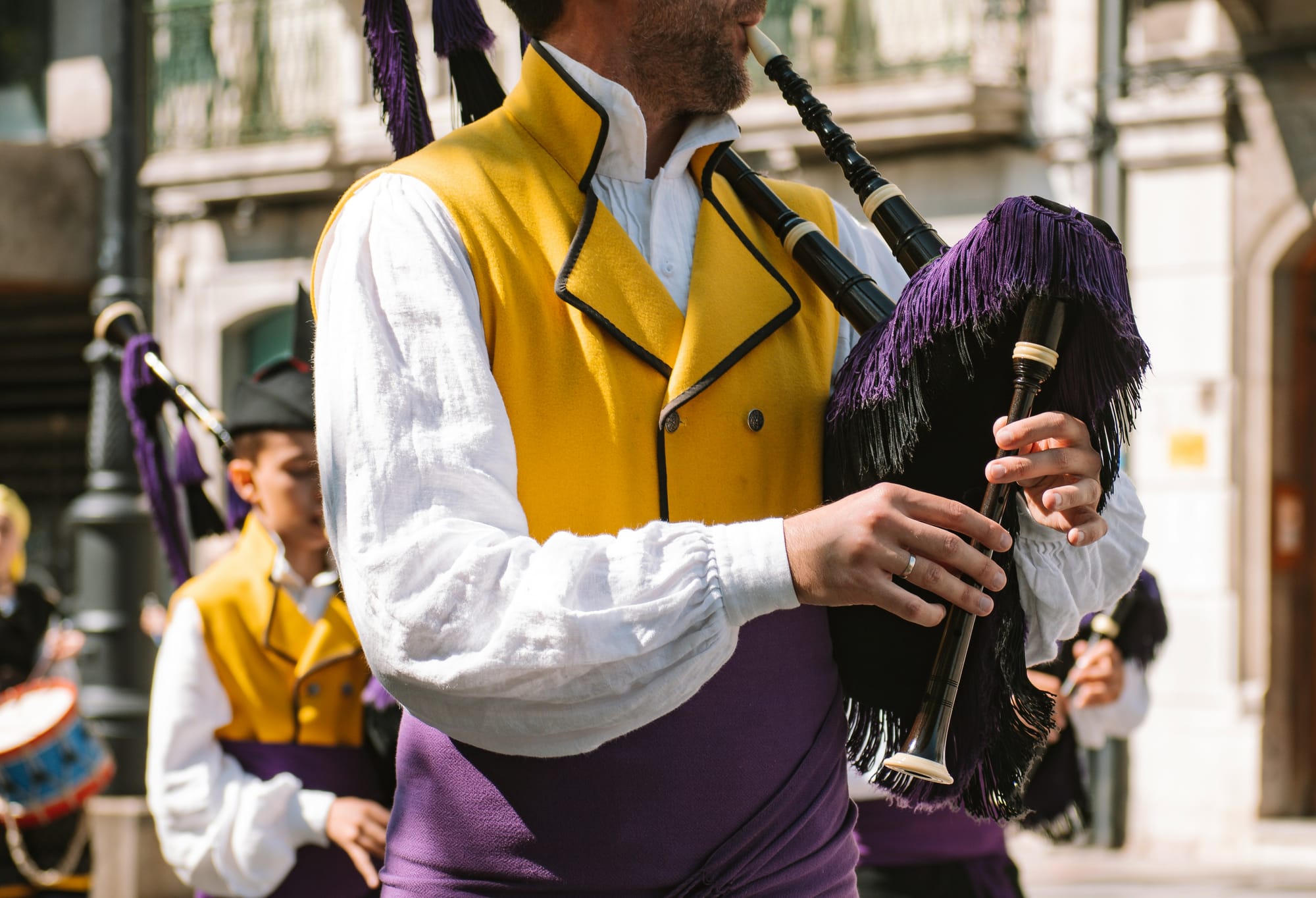
Famously associated with Scottish music, the bagpipes are a traditional wind instrument with two main elements: a bag and several pipes attached. The player inflates and squeezes the bag to achieve a continuous sound, while the pipes include a chanter for melody and drones for harmony. A steep challenge is learning to generate a stable sound and manage the airflow while playing the melody. Prepare to dedicate years to the craft for high proficiency in the bagpipes' technical and musical aspects.
Why it's hard: The bagpipes are notoriously tricky due to the coordination required to manage the bag, control the airflow, and play the chanter simultaneously. Significant physical and mental effort are necessary to sustain a steady pressure in the bag while playing the melody on the chanter and keeping the drones in tune.
Unique challenges:
- The need to coordinate the inflation and squeezing of the bag while playing the chanter.
- Managing continuous airflow and breath control for steady sound.
- Deal with the difficulty of tuning the instrument. It's sensitive to temperature and humidity changes.
Harp
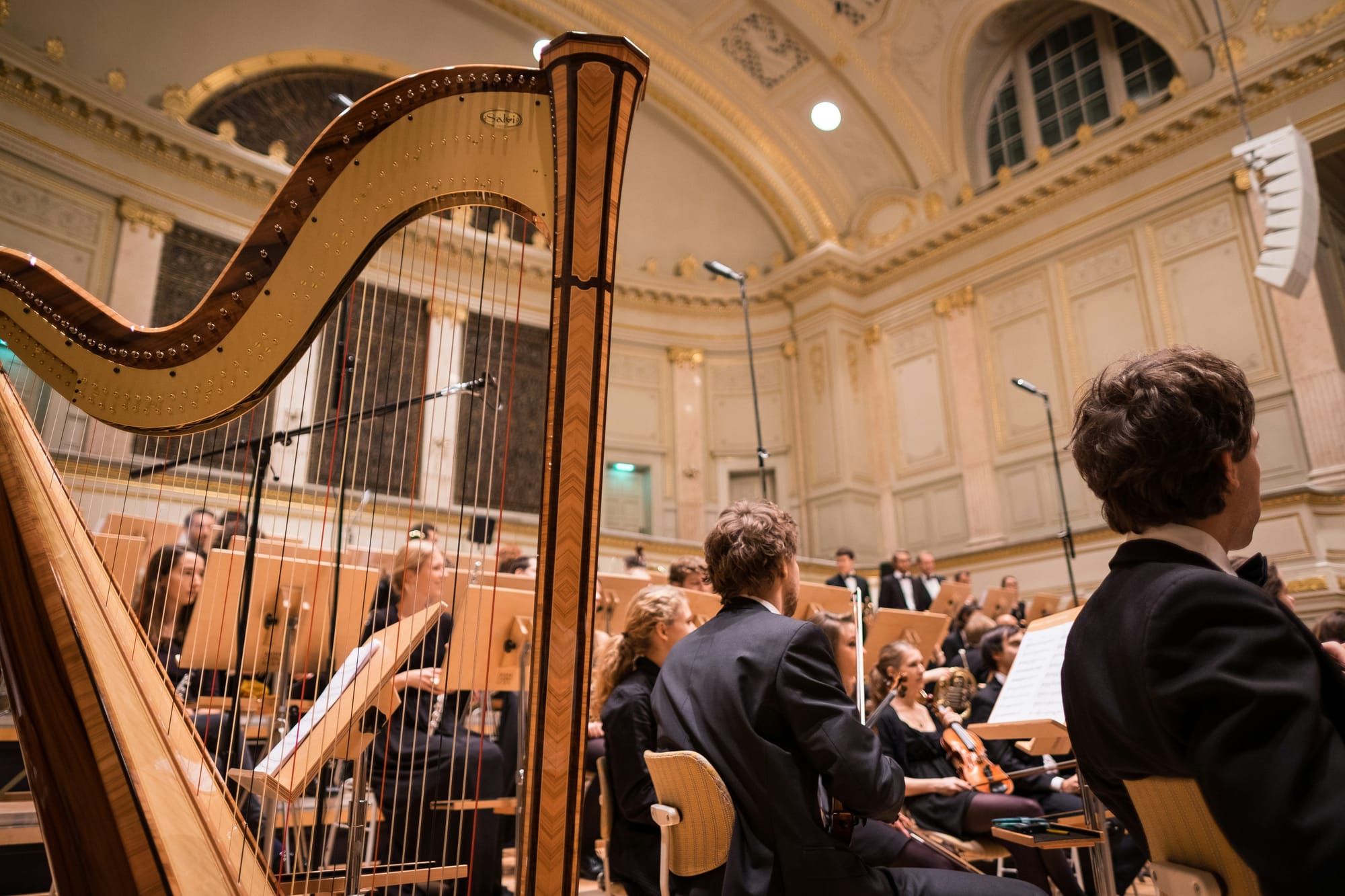
The harp is a string instrument famous for its ethereal, angelic sound. It has been used in classical music for centuries, where it's often associated – and even visually depicted – with the music of the heavens. Featuring a large, triangular frame with strings stretched vertically across it, the instrument is played by plucking the strings with the fingers. Developing the fluidity and precision required to play the harp proficiently can take years.
Why it's hard: The harp is challenging due to the coordination necessary between both hands and feet. Each hand plucks different strings to produce melodies and harmonies while the feet control pedals, changing the strings' pitch. Due to the large size and tension of the strings, the instrument also demands notable finger strength and dexterity.
Unique challenges:
- Coordinating both hands to play independent parts while managing foot pedals to change pitch.
- The development of finger strength and dexterity to pluck the strings cleanly for a consistent tone.
- Navigating the large size and weight of the instrument. This affects playing posture and endurance.
Cello

The cello is a string instrument famous for its deep, resonant tone. A prominent fixture in classical music, it's played by drawing a bow across the strings or by plucking them with the fingers. The cello's range and expressiveness make it a beloved, versatile member of the string family. Still, years of practice are often mandatory to achieve proficiency in bowing, finger placement, and vibrato.
Why it's hard: The cello is challenging for various reasons. Like the violin, it requires precise intonation on a fretless fingerboard, but you also have to account for its larger size, which makes it more challenging to maneuver. Bowing techniques must be mastered to achieve a consistent tone, and finger strength and dexterity must be developed to handle the wide spacing of the strings.
Unique challenges:
- Managing the large size and weight of the cello. These elements affect playing posture and technique.
- The need to develop precise intonation on a fretless fingerboard.
- Mastering complex bowing techniques and finger movements to produce a rich, expressive tone across the cello's wide range of sounds.
Accordion

The accordion is a free-reed instrument used in folk, classical, and popular music worldwide. It consists of a keyword or buttons on one side, buttons on the other, and bellows in the middle. The player compresses and expands the bellows to produce sound while the fingers on both hands play melodies and chords. Learning to coordinate the bellows with the keyword and button presses and mastering the layout of the buttons takes years of practice.
Why it's hard: The player needs to multitask. The bellows must control airflow and dynamics while simultaneously playing different parts on each hand. The coordination and muscle memory needed to manage these tasks – not to mention the physical effort required to operate the bellows – makes the accordion a difficult instrument to master.
Unique challenges:
- Simultaneously controlling the bellows for dynamics while playing melody and harmony parts with both hands.
- Muscle memory for the button layout on both sides.
- Managing the physical exertion to operate the bellows while maintaining musical expression.
Violin

The violin, a cornerstone of classical music, has expanded into folk, jazz, and contemporary genres. This is supported by its expressive capabilities, which make it a beloved yet challenging instrument. Producing a pleasing sound on the violin is notoriously difficult, and it typically takes years of practice to develop the necessary skills in intonation, bowing, and vibrato.
Why it's hard: The violin's difficulty starts with its fretless fingerboard, which requires exact finger placement to achieve correct intonation. The bowing technique is also vital, and mastering the coordination between bowing and fingering takes years of practice. Achieving a clean, in-tune sound is one of the biggest hurdles for beginners – and even more experienced players.
Unique challenges:
- Precise finger placement on a fretless fingerboard for accurate pitch.
- Complex bowing techniques demand high levels of control and fluidity.
- Proficient violin performance requires you to develop vibrato and other expressive techniques.
Organ
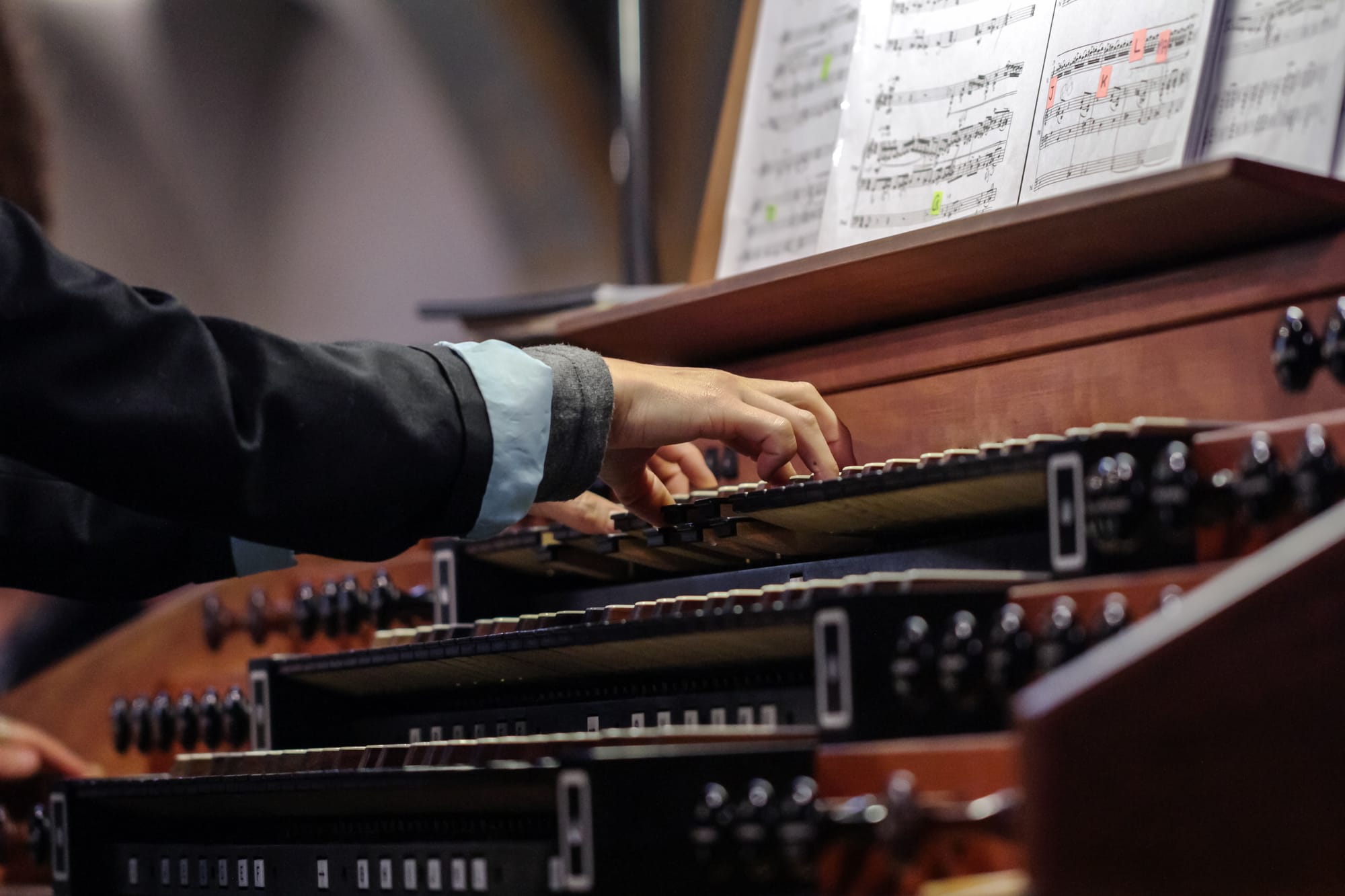
The organ is a keyword instrument known for its powerful and majestic sound. Often associated with churches and grand concert halls, it features multiple keyboards and a pedalboard, each controlling different pipes or electronic sounds. Even simple pieces can be a complex challenge to play on the organ due to the need for foot-pedal coordination and the wide range of notes available on multiple keyboards.
Why it's hard: The organ is one of the most complex instruments due to the need for complete coordination between hands and feet. Each keyboard and the pedalboard must be played simultaneously, often requiring the performer to manage multiple musical lines simultaneously. Furthermore, the organist must control stops and switches to adjust the timbre and volume, which adds another layer of complexity to proceedings.
Unique challenges:
- Coordinating hands and feet to play different musical parts on multiple keyboards and the pedalboard.
- Managing the organ's numerous stops and switches to control tone and volume.
- The physical stamina and mental focus required to perform complex, multi-layered compositions.
Conclusion
Mastering anything deemed the 'hardest instrument to play' will always be a journey filled with challenges. Yet, the rewards at the end are worth the effort. Whether the violin's expressive range or the accordion's complex coordination, these instruments offer unparalleled depth and satisfaction when fully committing to the craft.

